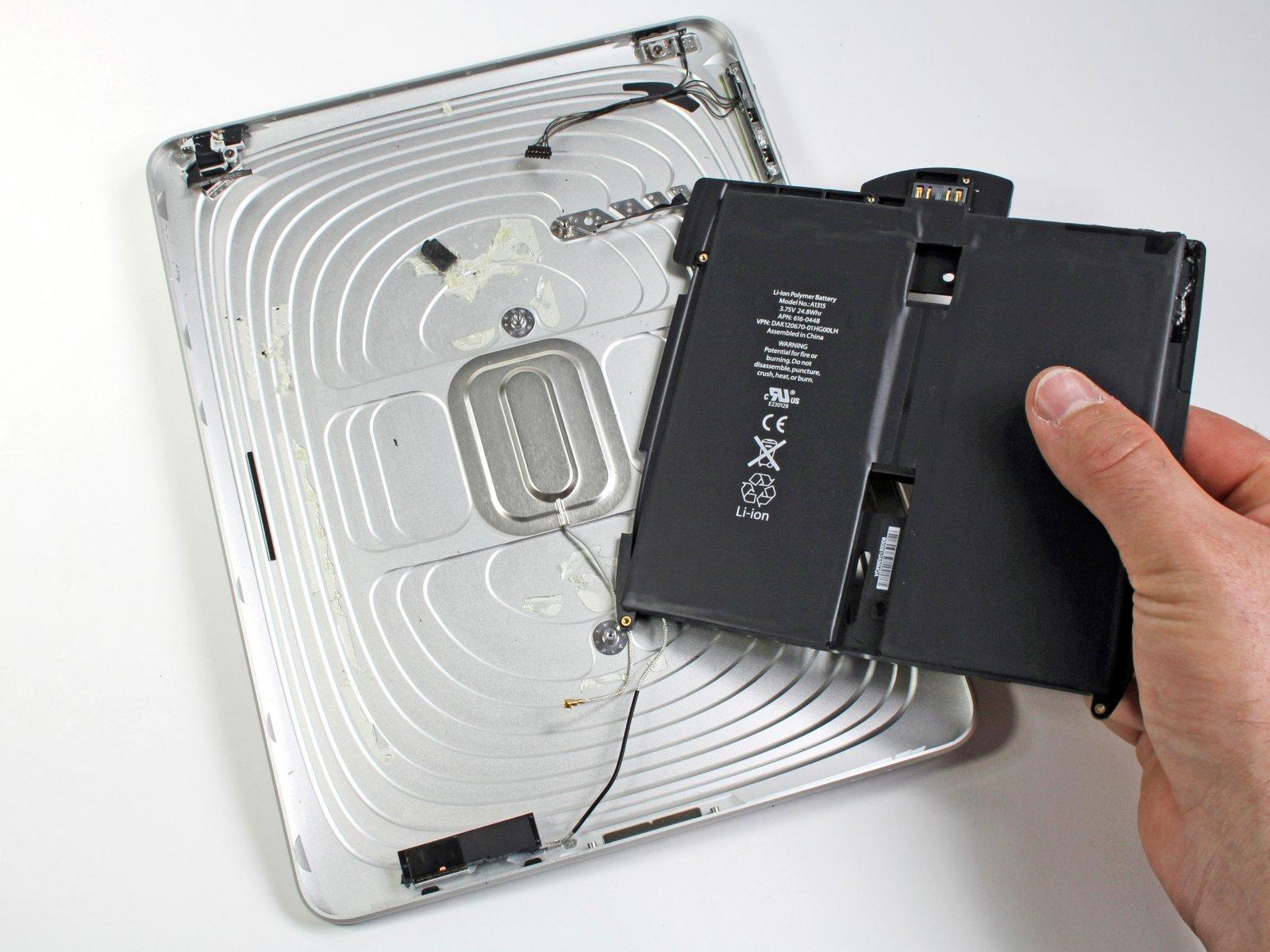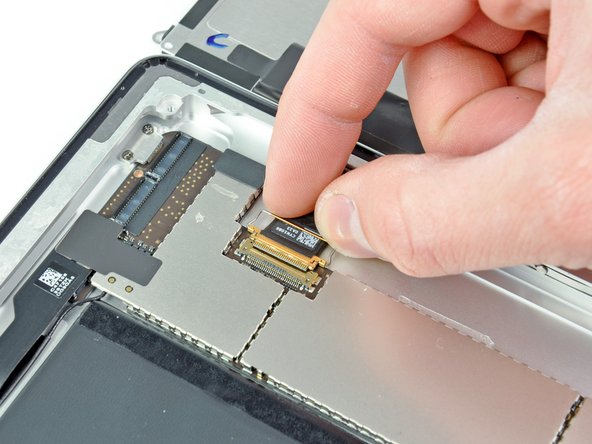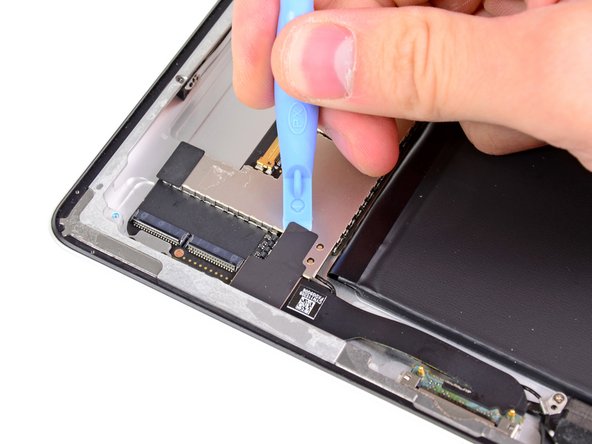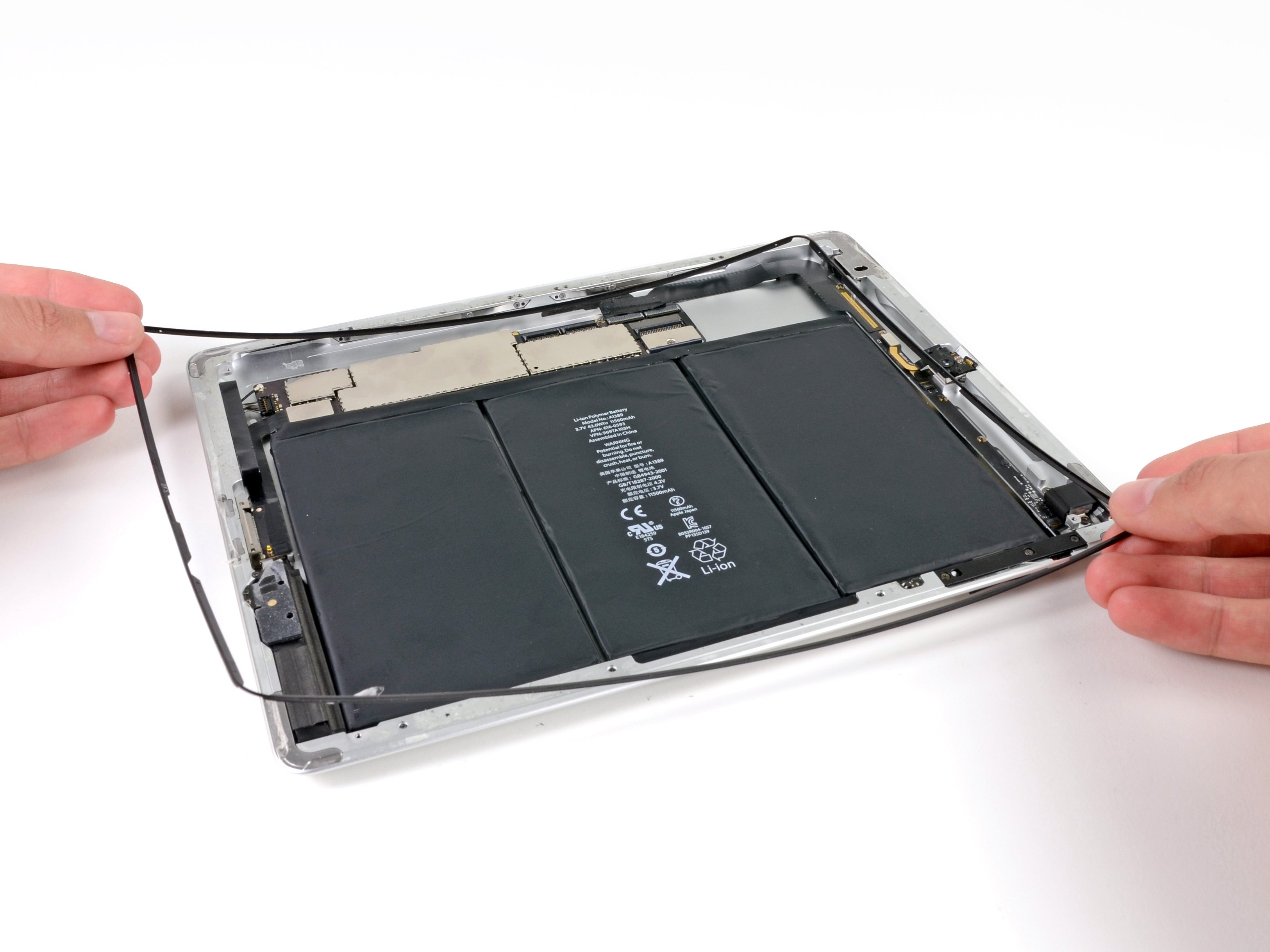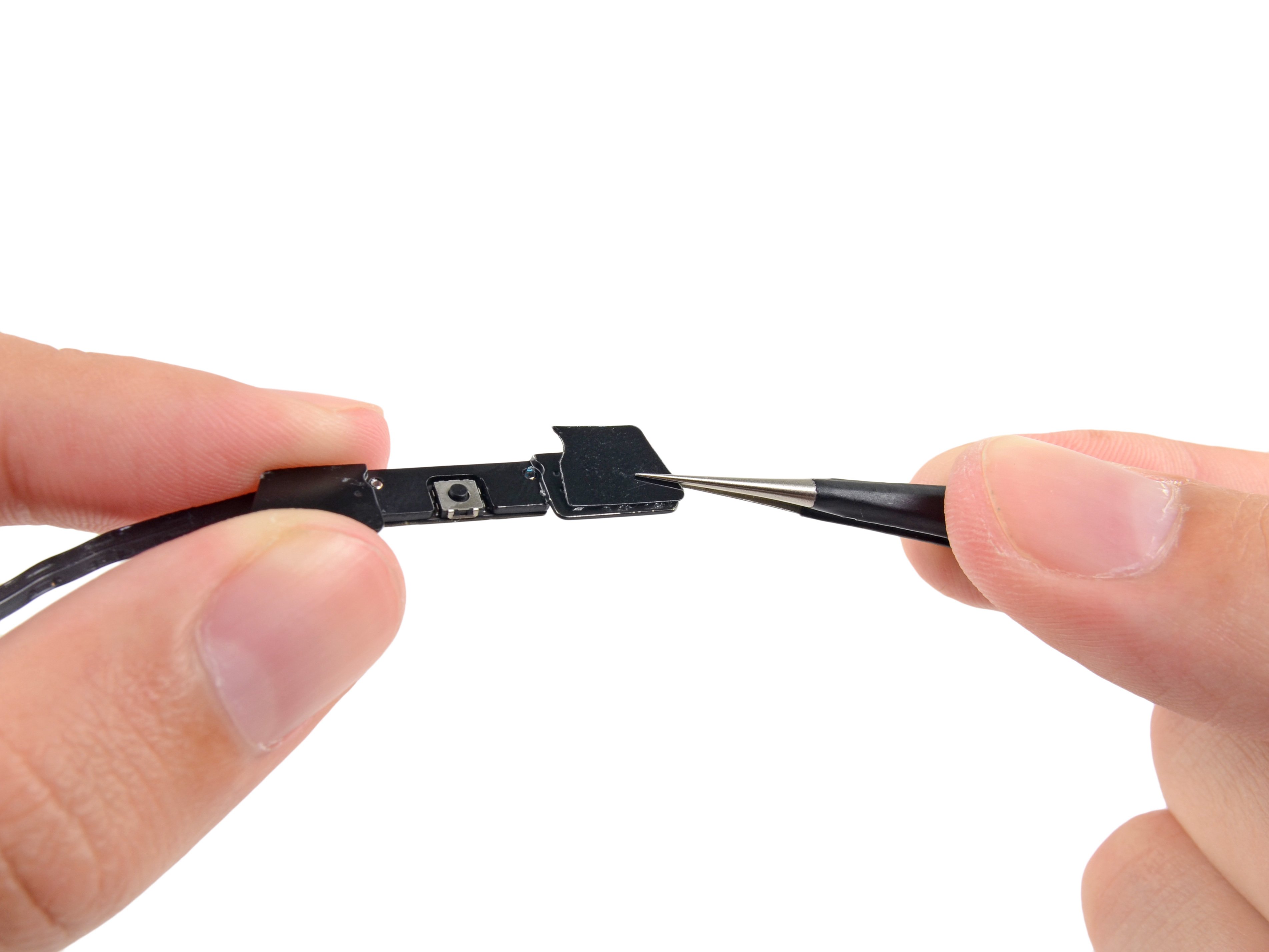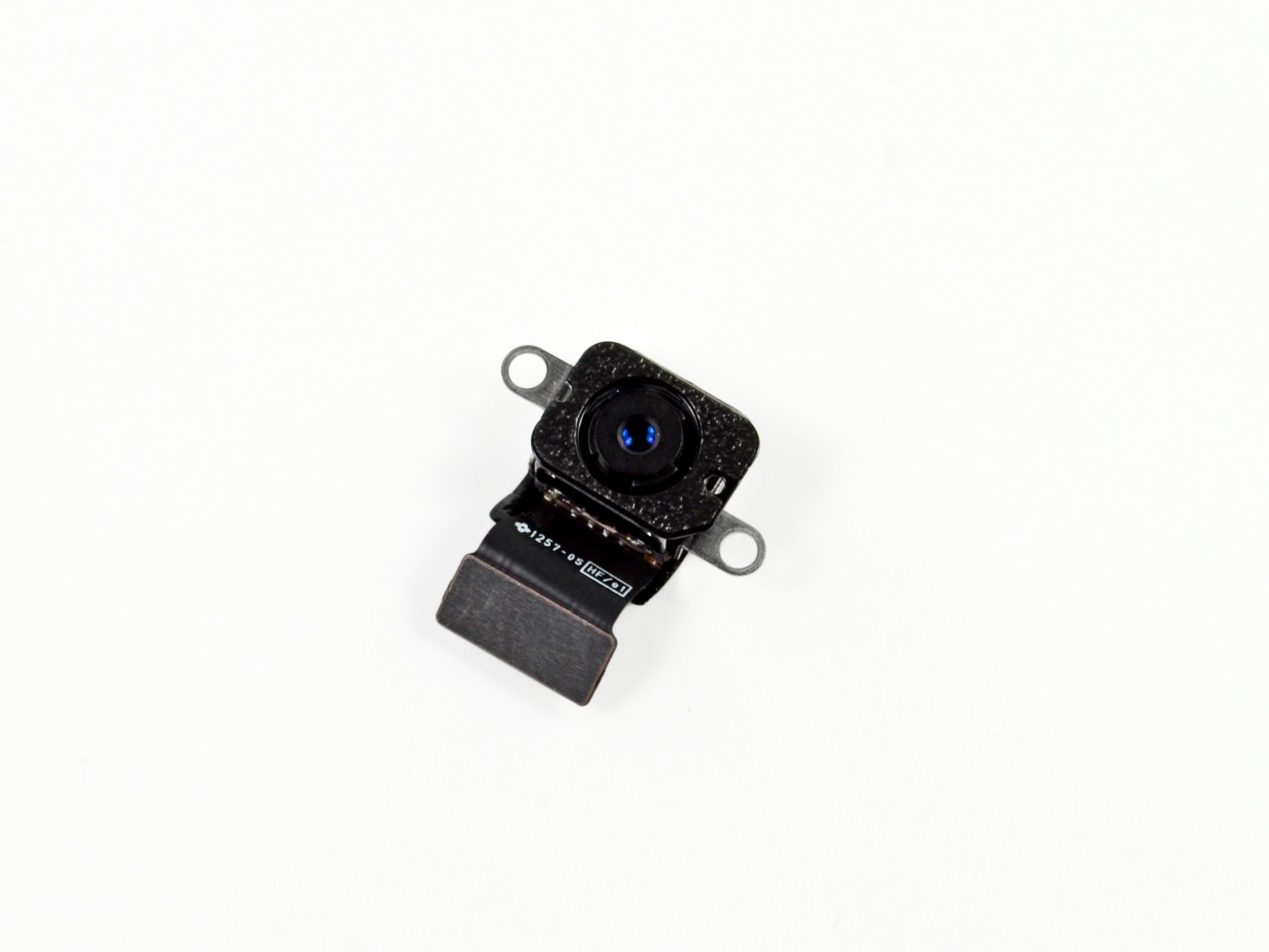iPad 2 Battery Replacement Guide: Step-by-Step Tutorial
Duration: 45 minutes
Steps: 51 Steps
Ready to give your device a fresh start? Let’s swap out that battery! If you notice any swelling, just remember to stay safe and take the necessary precautions. If you need help, you can always schedule a repair.
Step 1
It’s a great idea to give your microwave a quick clean before you dive in. Trust us, you don’t want any leftover gunk sticking to your iOpener during the process!
– Pop the iOpener right in the middle of the microwave like it’s taking a cozy little nap.
Tools Used
Step 2
Keep an eye on the iOpener during your repair journey! Overheating can lead to unexpected surprises, like bursting. So, let’s keep it chill—don’t heat it above 100˚C (212˚F).
If your iOpener looks like it’s been hitting the gym and is a bit swollen, steer clear of touching it.
Is the middle of your iOpener still too hot to handle? No worries! Just keep using it while it cools down a bit more before giving it another heat-up. A properly warmed iOpener should stay cozy for about 10 minutes!
– Give that iOpener a warm-up in the microwave for about thirty seconds.
– As you dive into the repair, keep an eye on the iOpener. When it starts to cool down, just pop it back in the microwave for another thirty seconds to keep the heat going.
Tools Used
Step 3
Watch out for the iOpener—it gets super toasty! Handle it with care, and if things get too hot to handle, grab an oven mitt.
– Carefully take the iOpener out of the microwave, gripping one of the two flat ends to steer clear of that hot center. Keep it cool and safe!
Tools Used
Step 4
No microwave? No problem! Just follow this step to warm up your iOpener in some good old boiling water.
– Grab a pot or pan and fill it up with enough water to completely dunk your iOpener.
– Heat that water up until it’s boiling, then go ahead and turn off the heat.
– Carefully pop the iOpener into the hot water and let it soak for about 2-3 minutes. Just make sure it’s fully immersed!
– Using some tongs, fish out the heated iOpener from the water.
– Give the iOpener a good dry-off with a towel so it’s ready to roll.
– And there you have it! Your iOpener is all set for action! If it needs a little reheating, just repeat the process: boil the water, turn off the heat, and let the iOpener soak for another 2-3 minutes.
Tools Used
Step 5
Put on those safety glasses to keep your peepers safe, and watch out for that LCD screen—it’s more delicate than it looks!
– If your display glass has a crack, let’s keep it together and avoid any oops moments during your repair by putting some tape on it.
– Grab some clear packing tape and lay overlapping strips over the iPad’s display until it’s completely covered. You’ve got this!
– Try your best to follow the rest of the guide as outlined. Just a heads up: once the glass starts cracking, it might want to keep going. You may need to use a metal prying tool to gently scoop out the glass.
Step 6
Just a heads-up: when working with shattered glass, it’s a smart move to rock some safety glasses. They’ll keep those pesky shards at bay and protect your peepers!
– Place the iOpener flat against the right edge of your iPad, making sure it’s nicely smoothed out for good contact. We want that warmth to work its magic!
– Give the bag a little time to work its charm on the iPad—about 90 seconds should do the trick—before you try to pop open the front panel.
Tools Used
Step 7
Getting that wedged tip of the opening tool between the glass and plastic might take a little muscle. Just remember to be patient and take your time! Gently wiggle the plastic opening tool back and forth as needed, and you’ll be on your way.
– Hey there! Spot that little gap in the iPad’s adhesive ring? It’s hanging out in the upper right corner, about 2.0 inches (~5 cm) down from the top. Let’s take advantage of this sneaky spot.
– Now, grab your trusty tool and line it up with the mute button. Gently slide the tip of your plastic opening tool into that gap between the front glass and the plastic bezel. Just pop in the very tip to help widen that crack a bit.
Step 9
– W
– i
– t
– h
–
– t
– h
– e
–
– t
– i
– p
–
– o
– f
–
– y
– o
– u
– r
–
– t
– r
– u
– s
– t
– y
–
– p
– l
– a
– s
– t
– i
– c
–
– o
– p
– e
– n
– i
– n
– g
–
– t
– o
– o
– l
–
– s
– n
– u
– g
– l
– y
–
– f
– i
– t
– t
– e
– d
–
– b
– e
– t
– w
– e
– e
– n
–
– t
– h
– e
–
– f
– r
– o
– n
– t
–
– g
– l
– a
– s
– s
–
– a
– n
– d
–
– p
– l
– a
– s
– t
– i
– c
–
– b
– e
– z
– e
– l
– ,
–
– g
– e
– n
– t
– l
– y
–
– s
– l
– i
– d
– e
–
– a
–
– p
– l
– a
– s
– t
– i
– c
–
– o
– p
– e
– n
– i
– n
– g
–
– p
– i
– c
– k
–
– i
– n
– t
– o
–
– t
– h
– a
– t
–
– l
– i
– t
– t
– l
– e
–
– g
– a
– p
–
– r
– i
– g
– h
– t
–
– n
– e
– x
– t
–
– t
– o
–
– y
– o
– u
– r
–
– t
– o
– o
– l
– .
–
– Y
– o
– u
– ‘
– r
– e
–
– d
– o
– i
– n
– g
–
– g
– r
– e
– a
– t
– !
Step 10
– Gently take out that trusty plastic opening tool from your iPad and slide the opening pick a little deeper under the front glass—about half an inch should do the trick!
Step 12
The adhesive is really tough, and you might need to put in some serious elbow grease. Take it slow and steady!
If you spot the tip of the opening pick peeking out from beneath the front glass, give it a gentle tug. Don’t worry, using the pick this deep won’t cause any harm, but it might leave some adhesive goo on the LCD. Just a little heads-up to keep your device looking fresh!
– While the iOpener warms up the bottom edge, let’s get that sticky adhesive loosened up from the right edge of your iPad.
– Gently slide the opening pick down the iPad’s edge, peeling away the adhesive bit by bit. You’ve got this!
Tools Used
Step 13
As you peel away the adhesive, you might want to slide that warm iOpener back onto the right edge of your iPad. This little dance depends on how cool the iPad has gotten while you’ve been busy with your repairs.
– If your opening pick is feeling a bit clingy and gets stuck in the adhesive, simply ‘roll’ it along the edge of the iPad to keep loosening that sticky stuff.
Tools Used
Step 14
– Before you pop that first opening pick into the bottom corner of your iPad, slide a second pick right under the edge of the front glass on the right side. This little buddy will help keep that pesky adhesive from sticking again!
– Give your iOpener a quick reheat, and then place it at the top edge of the iPad. Let’s keep things nice and warm for a smooth repair!
Tools Used
Step 15
Hey there! The Wi-Fi antenna is snugly fastened to the bottom right edge of the rear case of the iPad with some screws and a cable. Since the Wi-Fi antenna is positioned in a way that requires a bit of finesse, it’s super important to be careful during this process. A little misstep could lead to some serious damage to that antenna, and we definitely don’t want that!
– Alright, folks, it’s time to get a bit cautious here! We’re about to tackle some delicate work.
– You’ll need to carefully detach the adhesive that’s holding the antenna to the front panel. Just remember, we want to avoid any mishaps with the sensitive parts connecting the antenna to the bottom of the iPad. So, take a deep breath and follow these steps closely!
Step 16
Hey there! Just a friendly reminder: don’t slide that pick too far into the bottom right corner. It could put a hurt on your Wi-Fi antenna, and we don’t want that!
– Gently glide the opening pick around the bottom right corner of the iPad to free up that stubborn adhesive. You’ve got this!
Step 17
Take your time as you slide the opening pick along the bottom right edge of the front panel. The Wi-Fi antenna is hiding just around the corner, and it can be a bit shy—so be gentle! If the adhesive gives way too roughly, it might just decide to say goodbye.
Just slide that pick out a smidge! Leave about 1/8″ (3 mm) of the tip nestled under the front glass for best results. You’ve got this!
– Gently glide the tip of your opening pick along the bottom edge of the iPad to free up the adhesive around the Wi-Fi antenna. You’re doing great!
Step 18
– After you’ve gracefully glided past the Wi-Fi antenna (around 3″ (75 mm) from the right edge, or just next to the home button), pop that opening pick back in all the way. You’ve got this!
– Now, give that pick a little slide to the right. It’s time to release the adhesive that’s holding the Wi-Fi antenna snug against the front glass. Easy peasy!
Step 19
Keep the iOpener toasty for no more than a minute at a time, and remember to give it a breather for at least two minutes before giving it another go.
– Keep gently peeling away the adhesive at the bottom of your iPad. Slide that opening pick around the home button, making sure to pull it out just enough to get a good grip. Once you’re past the home button, reinsert the pick to about 1/2 inch (10 mm) deep. You’re doing great—just take your time!
Tools Used
Step 20
– Keep working that adhesive along the bottom edge of your iPad until it’s all released. You’re doing great!
– Slide the opening pick under the front glass close to the home button and leave it there like a trusty sidekick.
Step 22
If the adhesive has gotten a bit too cool, just swap out the iOpener along the top edge and keep at it! If your iOpener feels chilly, give it a little reheat and you’re good to go!
– Gently glide the opening pick along the top edge of your iPad, giving it a little tug to navigate around that front-facing camera bracket.
– The adhesive in this area is pretty stubborn, so you might need to put in some elbow grease. Take your time and be cautious—nobody wants a slip-up that damages you or your iPad.
– If the opening pick feels like it’s having a hard time with the adhesive, try giving it a ‘roll’ as shown in step 9.
Tools Used
Step 23
– Keep peeling away the sticky stuff along the top edge of the iPad, and gently maneuver the opening pick around that top left corner like a pro.
Tools Used
Step 24
The digitizer cable hangs out around 2 inches (50 mm) from the bottom of the iPad. When you’re sliding that pick, ease up when you get to about 2.25 inches (60 mm) from the bottom. You’re doing great!
– Gently glide that trusty opening pick along the left side of your iPad, letting it work its magic on the adhesive as you go. Just a heads-up: the adhesive is pretty thin here because of the digitizer, so keep your pick’s depth in check—no more than 1/2 inch (10 mm) to avoid any accidental digitizer damage. You’ve got this!
Step 25
Be super careful! The bottom of the digitizer cable is only about 1 inch (25 mm) from the base of the iPad. Take your time and tread lightly to avoid snipping this cable.
– With your trusty opening pick still nestled under the bottom edge of your iPad, gently coax the adhesive loose at the bottom left corner. You’re doing great!
Step 26
– Grab one of those handy opening picks and gently lift the bottom right corner of the iPad. Once you’ve got it popped up, give it a little love with your fingers to hold it steady.
Step 27
Watch out for any sticky stuff that might still be clinging on, and grab an opening pick to slice through any adhesive that’s holding the front panel in place. You’ve got this!
– Grab your iPad by the top and bottom right corners and gently twist the front glass away from the device like you’re unveiling a surprise!
– When it’s time to put everything back together, don’t forget to give that LCD a little TLC! Use a microfiber cloth and some compressed air to banish any pesky dust or fingerprints before reattaching the glass.
Step 28
– Unscrew those four 2.0 mm Phillips screws that are holding the LCD tight against the rear case. Let’s get that screen free!
Step 29
The front panel ribbon cables are hanging out under the LCD, just waiting for your attention! To get to them, simply flip the LCD over temporarily and set it aside like a pro.
– Gently lift the LCD from the edge nearest to the volume buttons and flip it out of the rear case, just like you’re turning the page of your favorite book.
– Now, place the LCD face down on the front panel, ready for the next steps!
Step 30
Make sure you’re gently lifting the hinged retaining flaps, not the sockets themselves. You’ve got this!
The retaining flaps are marked in cheerful red in the second picture.
– Gently nudge the retaining flaps on the two digitizer ribbon cable ZIF sockets upwards using the edge of a trusty plastic opening tool. You’ve got this!
Step 31
– Grab your trusty plastic opening tool and gently work it around the edge to lift that digitizer cable off the logic board’s shields. It’s like peeling a sticker off a fresh notebook, just take your time!
– Now, with a gentle tug, ease the digitizer cable away from the adhesive that’s holding it snugly to the rear case. You’re doing great, keep it smooth and steady!
Step 32
– Gently slide the digitizer ribbon cable straight out of its two snug sockets on the logic board. You’ve got this!
Step 33
To get that front panel assembly off, you’ll want to gently slide the ribbon cable out from between the case and the LCD. A little nudge on the LCD will help create some space for this step.
– Gently lift the LCD from the long edge that’s farthest from the digitizer cable, and then smoothly flip it towards the rear case—think of it like closing a book, but with a tech twist!
– While keeping the LCD elevated, carefully slide the front panel away from the iPad. Just watch out for that digitizer cable; we don’t want it getting stuck on the rear case or LCD!
Step 34
To dive into the iPad’s inner workings, we first need to gently lift the LCD out of its cozy case.
– Gently lift the LCD from the edge nearest the volume buttons and smoothly flip it out of the rear case—think of it like turning the page of your favorite book.
– Place the LCD face down on a clean surface. A soft cloth can be a great buddy here to keep it scratch-free.
Step 35
Hey there! Just a gentle reminder to avoid tugging that connector upwards when you’re unplugging it from its socket. Take your time, and you’ll do great!
– Grab your trusty plastic opening tool and gently nudge that display data cable lock upwards. You’ve got this!
– Now, with a steady hand, pull the display data cable right out of its cozy socket. Easy peasy!
Step 37
– If you’ve got it, grab a plastic opening tool to gently lift off the tape that’s holding down the dock connector cable.
– Carefully use the edge of your trusty plastic opening tool to nudge the dock connector cable’s connector up from its snug little home on the logic board.
– Now, let’s peel that dock connector ribbon cable off the rear panel like it’s a sticker begging to be removed!
Step 38
Take it easy and make sure to gently pry just the connector, leaving the logic board socket untouched—otherwise, you might end up with a socket that’s had a bad day.
– Gently lift the speaker cable connector straight up from its cozy spot on the logic board.
Step 39
Make sure you’re pushing up on the hinged retaining flap, not on the socket itself. You’ve got this!
– Grab your trusty plastic opening tool and gently lift the retaining flap on the headphone jack and front camera cable ZIF socket. You’ve got this!
– Carefully peel the headphone jack and front camera cable away from the rear case. You’re making progress!
Step 40
– Gently wiggle the headphone jack and front camera ribbon cable out of its cozy spot on the logic board. You’ve got this!
Step 41
Be sure to disconnect the cable gently without pulling it upwards.
– Grab that trusty plastic opening tool and gently lift the little retainer that’s keeping the control board cable connector snug in its home on the logic board.
– Now, give that connector a gentle tug and watch it slide right out of its socket on the logic board.
Step 42
– First up, grab your trusty screwdriver and take out those two 2.1 mm Phillips screws that are keeping the logic board bracket snug against the rear case, right by the digitizer cable socket. You’ve got this!
– Once those screws are out, gently lift the logic board bracket away from the rear case. Easy peasy!
Step 43
– Go ahead and take out those last three 2.6 mm Phillips screws holding the logic board snugly to the rear case. You’re almost there!
Step 44
– Gently slide the edge of a plastic opening tool under the logic board and give it a little nudge to break free from the sticky adhesive holding it to the rear case.
Step 45
Hold your horses! Don’t go yanking it out just yet—there’s still an antenna cable hanging on for dear life.
– Gently lift the logic board from the back of the case and give it a little tilt towards the battery, like you’re showing it the way to go.
Step 46
– Gently slide the edge of your trusty plastic opening tool underneath the Wi-Fi antenna connector and give it a little nudge to lift it out of its snug spot on the logic board.
– Carefully detach the logic board from your iPad 2 and set it aside, ready for its next adventure.
Step 47
Hey there! Just a friendly reminder to keep an eye on that iOpener during your repair adventure. Give it a breather for at least two minutes before reheating, and remember, no more than one minute in the microwave. Let’s keep things cool and safe!
– Pop that iOpener in the microwave for a quick one-minute warm-up.
– Once it’s nice and toasty, place the iOpener on the back of your iPad, just to the right of center (that’s the side opposite the rear-facing camera). Let it chill there for 90 seconds to loosen up that pesky battery adhesive.
– Next, slide the iOpener to the center of the back of the iPad and let it hang out for another 90 seconds.
– Finally, move the iOpener to the left edge (the side with the rear-facing camera) of the back of the iPad and give it another 90 seconds to work its magic.
Tools Used
Step 48
If the adhesive is putting up a fight, give the rear panel a little heat therapy and try peeling it off again.
– Let’s kick things off with the battery cell that’s closest to the dock connector. Grab your trusty plastic opening tool and gently slide it underneath the edge of the battery nearest to the logic board void. This will create just enough space for you to slip in the flat end of a spudger!
– Now, take that flat end of the spudger and glide it along the two long sides of each battery cell. We’re aiming to completely detach them from the adhesive that’s holding them tight to the rear case. You’re doing great!
Tools Used
Step 49
Handle that battery connector board with care—no extreme bending, please! And when you’re prying around the screw post on the aluminum rear case, just take it easy and be gentle. You’ve got this!
– Before you gently lift the middle battery cell, grab a plastic opening tool and carefully nudge the battery connector board away from the rear panel. You’ve got this!
Step 50
– Now it’s time to grab your trusty spudger and gently work your way along the long edges of the middle battery cell, separating that adhesive like a pro.
– Once you’ve tackled that, go ahead and repeat the same steps for the last battery cell. If things get a bit stubborn, don’t hesitate to give the case a little heat to help it along!
Tools Used
Step 51
– G
– e
– n
– t
– l
– y
–
– p
– o
– p
–
– t
– h
– e
–
– b
– a
– t
– t
– e
– r
– y
–
– o
– u
– t
–
– f
– r
– o
– m
–
– t
– h
– e
–
– b
– a
– c
– k
–
– p
– a
– n
– e
– l
–
– a
– n
– d
–
– s
– e
– t
–
– i
– t
–
– a
– s
– i
– d
– e
– ,
–
– g
– i
– v
– i
– n
– g
–
– y
– o
– u
– r
–
– i
– P
– a
– d
–
– 2
–
– a
–
– l
– i
– t
– t
– l
– e
–
– b
– r
– e
– a
– t
– h
– e
– r
– !
